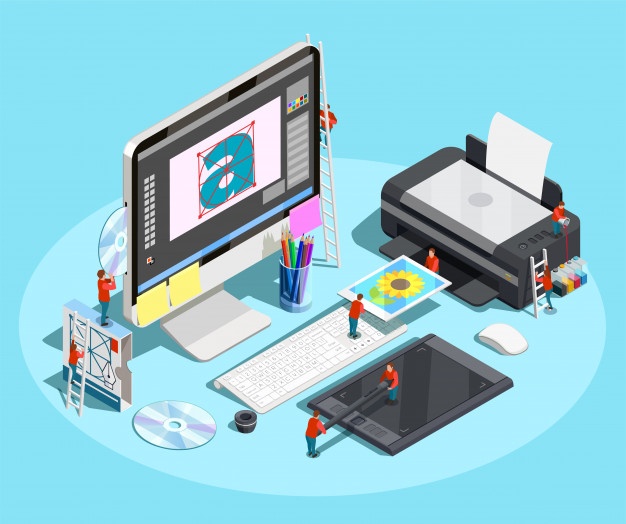So you want to become a professional graphic designer? Whether you’re looking to make a career change or wondering whether the graphic design is for you, we’re here to offer some guidance.
Graphic Designers are visual storytellers. Through combining images, words, and graphics, they communicate information and engage audiences. Graphic Designers use design elements, such as shapes, colors, lines, and textures, to produce a range of work.
They create everything from posters and product packaging to logos and animations. Graphic design is an essential part of the marketing and advertising efforts of a brand or company. Graphic Designers, also known as Communication Designers, build visually appealing designs that support the brand’s message and evoke emotion from consumers.
1. Have some design and build portfolio
Even though you may have no experience as a graphic designer, that doesn’t mean you can’t start building a portfolio of work that you can share with prospective clients.
For example, you can start by building your own designs and spec designs for brands or other companies you are interested in. Start by choosing five brands you love, and create five different graphic design assets for each one. These could be:
- Instagram posts
- A website homepage
- Infographics
- Product brochures
- Magazine Covers
- Logos
Once you have the assets made, you can then share them with prospective clients and start picking up assignments!
2. You can use Canva as free tool
If you have limited skills in Photoshop or other high-end graphic design applications, Canva.com offers an easy-to-use platform that can take your graphic design skills to the next level. Check it out.
3. Invest in the right tools
If you want to become a graphic designer, you’ll also need to become proficient in the graphic design software in which you’ll create your work. If you’re just starting out, consider downloading a few free graphic design softwares before investing in more robust tools. Free graphic design tools like Vecteezy, CorelDraw, or Inkscape are great options to explore among many others.
Once you’re ready to take your technical skills to the next level, we recommend investing time in mastering industry stalwarts like Adobe Illustrator and Adobe Photoshop. These are the most widely used tools across the industry—and are incredibly powerful.
4. Understand the Principles
One thing we do teach on the Shillington course is the fundamentals of design. Most importantly, the design principles.
No matter where how you choose to become a graphic designer, you won’t get far without these. These principles are alignment, repetition, contrast, hierarchy and balance—they’re crucial in creating any successful design. Therefore, they’re a crucial part of becoming a graphic designer.
For a little bit of a leg up on your journey to becoming a graphic designer, let us quickly break down what each one means or how it affects a design:
Alignment—> creates a sharper, more unified design.
Repetition—> strengthens a design by tying together otherwise separate parts and, as a result, creates associations.
Contrast—> is the most effective way to create emphasis and impact with your design.
Hierarchy—> creates organisation.
Balance—> provides stability and structure to a design, either through symmetry or tension of elements.
These are only some quick definitions but for a far more in depth look into the Design Principles, check out this article.
Think of this as a quick little guide to help you on your way to becoming a graphic designer. Though, actually understanding the fundamentals takes a lot more than just knowing what each one means.
Any graphic designer worth their salt should be able to put these into practice in each and every design they create. The Design Principles work together to create a design that is both visually appealing and properly structured. We can’t stress how important they are to master if you want to be a graphic designer.






Recent Comments